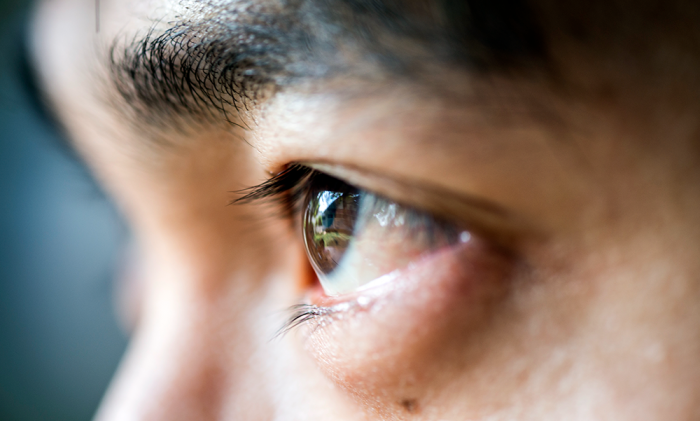
Glaucoma can be a devastating disease if left untreated. As with many health conditions, the earlier it is detected, the better. Two University of Minnesota Physicians (M Physicians) ophthalmologists provide insight on the condition during National Glaucoma Awareness Month.
Dr. Huda Sheheitli cares for adult glaucoma patients at the Philips Wangenstein Building in Minneapolis and the M Health Fairview Clinics and Surgery Center - Minneapolis. Dr. Ray Areaux cares for patients with pediatric glaucoma at the Minnesota Lions Children’s Eye Clinic in Minneapolis and the M Health Fairview Clinics and Surgery Center - Maple Grove. Both physicians are fellowship-trained to care for these complex conditions.
January is National Glaucoma Awareness Month, an important time to spread the word about this common disease. According to the World Health Organization, glaucoma is the second leading cause of blindness in the world. Over three million people in the U.S. today are diagnosed with glaucoma and we expect this number to keep increasing. It’s very important that we continuously screen for this disease in order to diagnose patients early and deliver the appropriate treatment before irreversible vision loss happens.
Dr. Sheheitli
Glaucoma is a group of diseases that gradually cause permanent vision loss. Most of the time the vision loss occurs with no symptoms or warnings. The main two types of glaucoma are open-angle glaucoma and angle-closure glaucoma, both of which are marked by an increase in the pressure of the eye.
“Glaucoma occurs when intraocular pressure rises above normal levels to damage the optic nerve, the cable that connects your eye to your brain,” Dr. Areaux said.
The optic nerve transmits images from the eye to the brain, similarly to a connecting electrical cable, except that in this instance the wires are layers of nerves. Dr. Sheheitli explained why damage to these nerve layers is problematic: “Unfortunately once vision is lost due to damage to the optic nerve, the loss is permanent. Most of the time, gradual loss of vision occurs before the patient actually realizes it, and this is because most of the vision loss occurs in the peripheral vision before it affects the central vision.”
Certain individuals are at higher risk for developing glaucoma, those include: people over the age of 60, family members of those already diagnosed with glaucoma, people of African American, Asian and Hispanic descent, patients with diabetes, and those who are severely nearsighted.
Although glaucoma is more common in the elderly population, it can affect people of all ages. Glaucoma can be found in children, who must then deal with the condition and any permanent vision loss for their entire lives. If pediatric glaucoma is diagnosed early enough, surgery can slow or even cure the disease. Sadly, glaucoma often goes undetected in children because it is rare–occurring in roughly one in every 25,000 children–and often doesn’t manifest in a way that parents can detect until vision has already become irrevocably diminished. The disease often masquerades as simple nasolacrimal duct obstruction (simple tearing) in infants. In addition, children often struggle to communicate what’s happening to those around them and they’re hesitant to take daily eye drops or receive treatment for a complex condition that they don’t fully understand.
Dr. Areaux’s practice at the Minnesota Lions Children’s Eye Clinic at the University of Minnesota Medical Center’s West Bank Campus is the only location in Minnesota with the specialized knowledge and resources to fully care for pediatric glaucoma patients. “We see children from all of Minnesota and the upper midwest. Some families drive eight or 10 hours for treatment,” Dr. Areaux said. Even if surgery is successful, pediatric patients will still require regular eye exams to ensure the condition doesn’t worsen and to treat other co-existing eye conditions like amblyopia and strabismus.
Preventative screening is crucial for glaucoma. Examinations with an eye doctor (optometrist or ophthalmologist) to check vision, eye pressure and the eye anatomy can save a person’s vision before it’s too late. The American Academy of Ophthalmology recommends that, at a minimum, all adults over age 40 be screened for glaucoma and other eye conditions every 2 years. Infants and children should have regular eye screenings with their primary care doctors starting at birth to ensure that visual development is healthy and that prompt referrals are made to pediatric eye doctors when needed.
I want to emphasize the importance of early detection of the disease to prevent irreversible severe vision loss. We want to catch the disease at early stages and help halt it’s progression. Make sure you get your eyes checked regularly to protect yourself from this sight-stealing disease.
Dr. Sheheitli